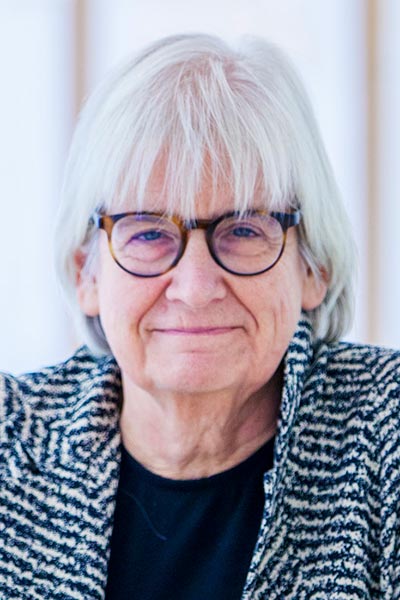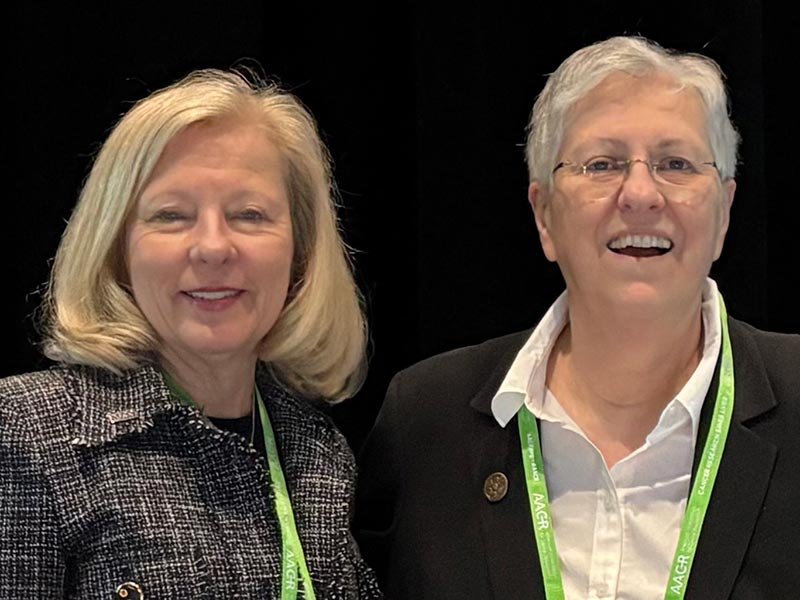AACR-ASCO joint session explores the potential of theranostics

Around 2000, the term theranostics—defined as the combination of therapy and diagnostic imaging modalities—first appeared, according to E.G. Elisabeth de Vries, MD, PhD, the first speaker in a joint session from the American Association for Cancer Research (AACR) and American Society of Clinical Oncology (ASCO) at AACR Annual Meeting 2025 on Challenges and Opportunities in Theranostics.
Within a decade, theranostics expanded its reach to incorporate standard-of-care therapies like chemotherapy and radiation as well as imaging technologies like MRI, PET/SPECT, or near-infrared fluorescence and photodynamic therapy.
In 2025, theranostics continues to explore opportunities to enhance clinical care involving today’s therapeutics, including antibodies, antibody-drug conjugates, hormonal treatments, and radiopharmaceuticals. But with only a handful of theranostics indications approved by the U.S. Food and Drug Administration (FDA), for prostate, neuroendocrine, and breast malignancies, the field’s current efforts seek to expand its impact and hopefully benefit more patients.

Addressing that challenge was the focus of this joint session, which was chaired by AACR Immediate Past President Patricia M. LoRusso, DO, PhD (hc), FAACR, and Robin Zon, MD, president of ASCO.
“We have to face the challenge of how we are going to implement these clinical advances at the bedside,” said Zon during her introduction, while also noting the importance of ensuring access to these new therapies. “Additionally, how do we engage our multidisciplinary partners, because this particular topic requires multidisciplinary team members and local administrators in adopting these new techno-therapies?” Zon asked.
de Vries, of University Medical Center Groningen in the Netherlands, discussed how theranostics dovetails with molecular imaging and cancer drug development. She noted that theranostics are currently only part of the standard-of-care therapy with radiopharmaceuticals, referencing the approval of a PET imaging agent to detect estrogen receptor-positive lesions in patients with recurrent or metastatic breast cancer.
Molecular imaging plays a potential role in “de-risking” in all phases of drug and biomarker development, de Vries said, including in tumor targeting, pharmacokinetics and whole-body distribution, pharmacodynamics, and biomarker enrichment and selection.
de Vries said theranostics, with the use of model-informed precision dosing that takes into account both efficacy and toxicity can support optimal antibody dose determination. Pharmacokinetic data can include antibody levels in blood or urine, whereas PET data give insights into whole-body drug distribution, including uptake by tumors. Relevant pharmacodynamic measures may include tumor assessment-based endpoints.

Next, Ravi Patel, MD, PhD, of UPMC Hillman Cancer Center, discussed how dosimetry might enable doctors to better tailor radiopharmaceutical therapy to individual patients. He highlighted the growing use of targeted radiopharmaceutical therapies, such as 177 lutetium-PSMA-617 in prostate cancer, which show promise but also face challenges around patient access and implementation.
However, when institutions consider the cost of expansion to increase patient access to radiation oncology services, radiopharmaceuticals offer a financial edge compared to related technologies, said Patel. Linear accelerators for radiation treatment can cost up to $6 million, with annual maintenance of $250,000. In comparison, key theranostics expenses are much more affordable: approximately $10,000 for a dose, $200,000 for construction of dedicated rooms, and $40,000 for maintenance RAM licenses.
Optimizing radiopharmaceutical therapies requires personalized dosimetry to account for heterogeneous tumor uptake and normal tissue distribution, Patel said. While dosimetry can guide treatment decisions, the added complexity requires overcoming barriers like software limitations and the lack of clear guidelines. Additionally, multi-time point SPECT imaging can be resource intensive and inconvenient for patients. Whole-body tumor contouring can add to the physician’s workload significantly, and reimbursement for dosimetry work is not guaranteed due to the lack of high-quality studies supporting dosimetry as essential.

Mike Sathekge, MD, PhD, of the University of Pretoria in South Africa, discussed improving global access to innovative radiopharmaceuticals, noting that nuclear medicine’s contributions to precision oncology span the full spectrum of care. “Not only do we prognosticate but we can predict who is going to be a beneficiary … and decide whether we are over- or under-treating and adjust accordingly,” he said.
Sathekge identified important barriers to the integration of radioligand therapies into clinical care, including knowledge and skill gaps, communication challenges such as a lack of adequate guidelines and regulatory harmonization, and financial considerations given that radiopharmaceutical supply chains are costly and institutional infrastructure is limited, he said.
Sathekge also cited the limited inclusion of diverse populations in clinical trials as another hurdle that will be necessary to clear in order to maximize the adoption and clinical impact of these technologies.
“If we are going to be including patients from the U.S. only, we might miss out on how [to] tackle the heterogeneity and resistance [of different genetic and epigenetic profiles].” Therefore, he said, “Our radiopharmaceutical therapies will not be sustainable and they will not become cheaper.”
Concluding his talk, Sathekge emphasized the potential benefits of combining alpha and beta therapies, which each offer distinct advantages, to reduce side effects and improve efficacy. Similar to other therapeutic approaches, radiation-based therapies may also be more effective if given earlier in the course of care.
“We have demonstrated that if we [treat early], we have better survival and better responses than if it is after multiple therapies,” he said, “so we really advocate that it has to be a sequencing that is patient-based and not one-size-fits-all.”
The recording of the full session is available for registered Annual Meeting attendees through October 2025 on the virtual meeting platform.
More from the AACR Annual Meeting 2025
View a photo gallery of scenes from Chicago, continue the conversation on social media using the hashtag #AACR25, and read more coverage in AACR Annual Meeting News.

